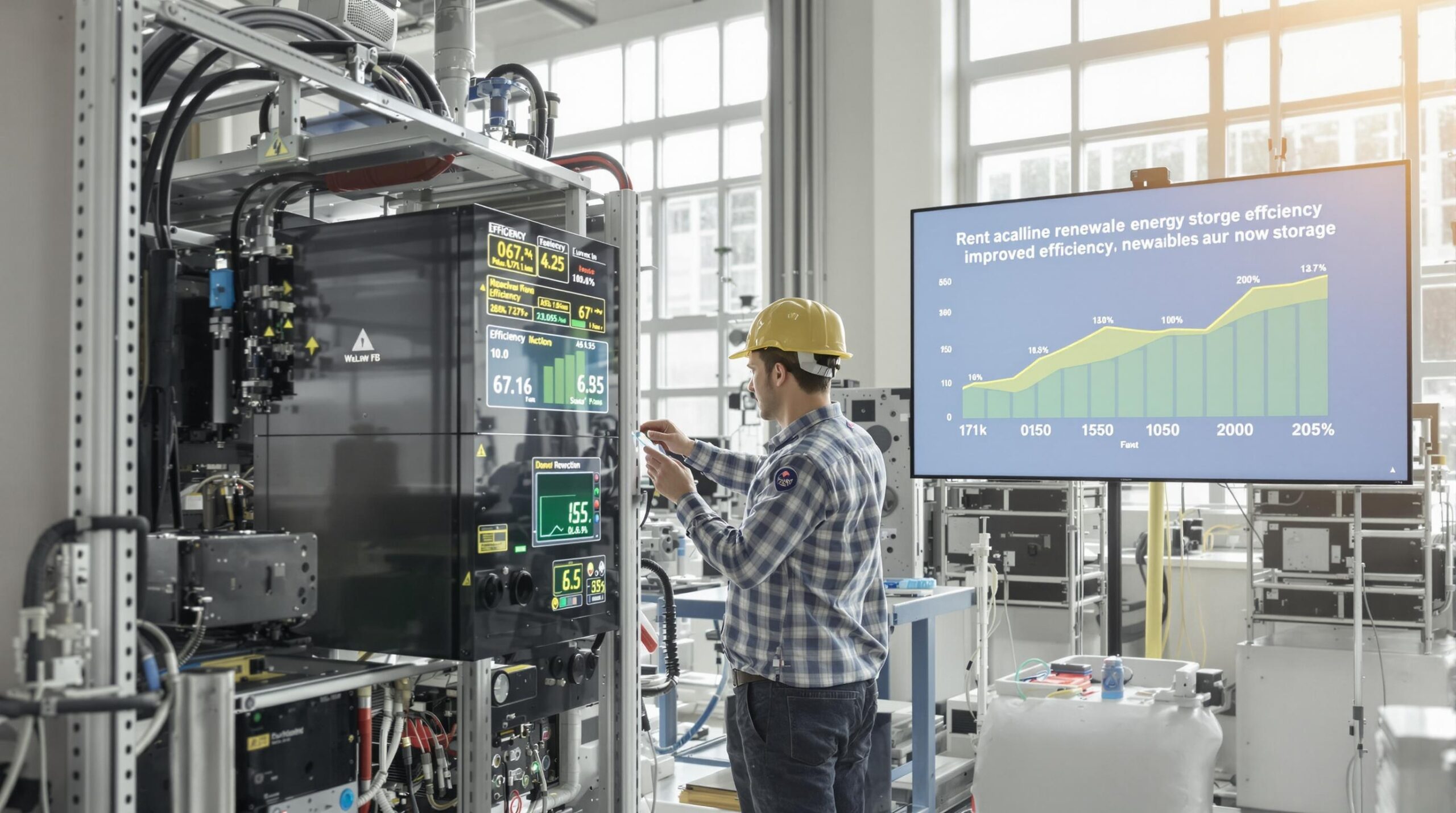Renewable energy sources continue gaining traction worldwide, driven by climate concerns and the need for sustainable growth. However, inconsistent energy supply from solar and wind presents crucial challenges. Effective energy storage offers a solution and can revolutionize how we distribute and use clean energy. A new breakthrough in renewable energy storage promises remarkable efficiency, potentially transforming global power systems. This article explores the advancements, their workings, and the implications for a cleaner future.
The Challenge of Storing Renewable Energy
Solar and wind energy produce electricity only when conditions are favorable, creating fluctuations in supply. On a sunny afternoon, solar panels generate excess power, while on cloudy days, they can result in shortages. Wind power faces similar issues due to changing wind speeds. These inconsistencies limit the integration of renewables into power grids, raising reliability concerns. Storage systems help by capturing excess energy and releasing it during times of need. Improving storage technology has become essential to unlock the full potential of renewables.
Current Energy Storage Technologies and Their Limitations
Batteries remain the most common storage solution for renewable energy. Lithium-ion batteries, popular in smartphones and electric vehicles, dominate the market. They are favored for their quick charging and high energy density. However, these batteries have notable drawbacks, including limited lifespan, expensive materials, and risk of fire. They also degrade over time, reducing storage efficiency. Pumped hydro storage provides large-scale capacity but needs specific terrain and reservoirs. Flow batteries, though promising, face high costs and technical barriers. Each solution plays a vital role, but limitations persist.
A Game-Changing Breakthrough: Next-Generation Solid-State Batteries
A global research team recently announced a breakthrough in solid-state battery technology. This innovation replaces the liquid electrolyte in traditional batteries with a solid supplement. The new design enables faster charging, higher capacity, and reduced degradation. Solid-state batteries also offer superior safety, as they are less prone to overheating or catching fire. By addressing many drawbacks of lithium-ion batteries, this advancement could disrupt existing storage solutions. Early prototypes reportedly store more energy and last longer under rigorous conditions.
How Solid-State Batteries Work
Solid-state batteries work similarly to existing batteries but use a solid material as the electrolyte. This change provides several benefits. Solid electrolytes are less reactive, leading to increased safety and stability. Additionally, they can support higher voltages and reduce energy losses over time. The innovation allows denser packing of energy, giving these batteries a clear advantage in both size and output. With materials sourced from more abundant elements, production costs could decrease as manufacturing scales up.
Testing and Results
Researchers tested the batteries under conditions mimicking real-world grid storage scenarios. Results revealed higher energy retention after thousands of complete charge-discharge cycles. The advanced batteries maintained over 90% of their initial capacity, while lithium-ion options dropped to 70% within the same period. Safety testing under stressed conditions also showed resistance to thermal runaway. These results suggest commercial deployments could proceed in the coming years. Enhanced durability and low maintenance further support long-term use across utilities.
Additional Advances Complementing Storage Breakthroughs
Breakthroughs in ancillary technologies further maximize the benefits of solid-state batteries. Advanced energy management systems now utilize artificial intelligence to optimize storage and distribution. Smart grids communicate real-time information to predict supply, demand, and potential faults. Integration with advanced sensors ensures batteries operate within ideal parameters, extending lifespans. Moreover, scalable battery modules allow utilities to install storage capacities that match their needs. These developments work together to increase the efficiency and longevity of renewable power networks.
Environmental and Economic Implications
Improved energy storage significantly reduces the need for fossil-fuel backup power plants. This shift decreases greenhouse gas emissions and air pollution around population centers. Economically, solid-state battery production utilizes more widely available elements, aiding material supply chains and lowering costs. As renewables and storage scale up, energy prices could stabilize or drop. Tied to this, the cleaner industry creates new jobs across manufacturing, installation, and research sectors. These factors structure a compelling case for global investment in advanced storage.
Impact on Renewable Energy Deployment
With reliable, efficient storage, renewable energy can serve as a constant and dependable power source. Countries with high solar and wind potentials could increase their clean energy market shares. Remote locations and islands benefit greatly, as advanced batteries provide off-grid options with minimal maintenance. Utilities that once hesitated to expand green infrastructure due to intermittency could now move forward confidently. This progress accelerates the transition from fossil fuels, helping countries achieve ambitious climate targets faster than predicted.
Future Prospects and Next Steps
Researchers plan to develop commercial-scale production methods for solid-state batteries over the next several years. Collaboration between governments, industry stakeholders, and research institutions will speed up this process. Policy support, including incentives and updated regulations, could help utilities adopt the new technology quickly. Markets in Europe, North America, and Asia already show interest in pilot projects. As further refinements occur, the cost per kilowatt-hour of storage should decrease dramatically. These advances reshape the renewable energy landscape and inspire further innovation.
Conclusion: A Turning Point for Clean Energy
The recent breakthrough in renewable energy storage marks a significant turning point in the fight for energy sustainability. Solid-state batteries and associated advancements promise efficiency, safety, and economic benefits never seen before in energy storage. With continued research, innovation, and investment, this technology will likely drive the next era of global clean energy transformation. As storage limitations fade away, renewables can finally deliver on their promise of abundant, dependable, and environmentally friendly power for all.

